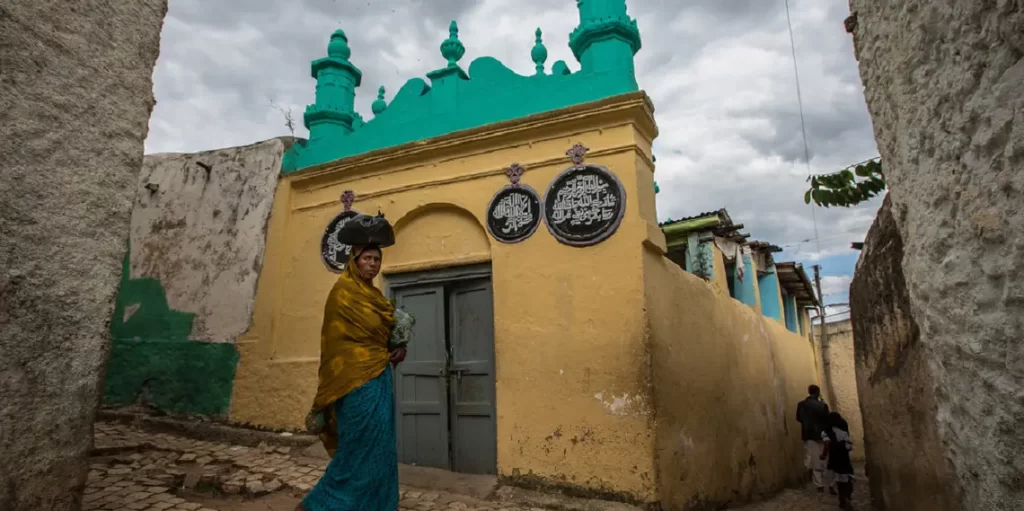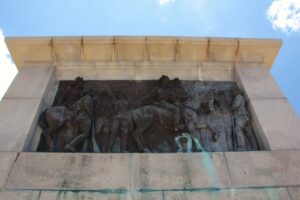Nestled in the eastern highlands of Ethiopia, Harar Jugol is a mesmerizing city that offers a unique blend of history, culture, and architecture. Known as the fourth holiest city of Islam, Harar is a UNESCO World Heritage site that captivates visitors with its ancient walls, vibrant markets, and rich traditions. Whether you’re a history buff, a culture enthusiast, or simply a curious traveler, Harar Jugol promises an unforgettable experience.
What to See in Harar Jugol
Harar Jugol is renowned for its ancient city walls, which encircle the old town and date back to the 16th century. These walls, made of stone and clay, are punctuated by five historic gates that lead into a labyrinth of narrow alleyways. As you wander through these winding streets, you’ll encounter over 80 mosques and 100 shrines, each with its own story and significance.
One of the must-see attractions is the Harar Museum, housed in the former residence of the French poet Arthur Rimbaud. The museum offers a fascinating glimpse into the city’s past, showcasing artifacts, photographs, and manuscripts that highlight Harar’s rich cultural heritage. Another highlight is the bustling Harar Market, where you can immerse yourself in the vibrant atmosphere and shop for traditional crafts, spices, and textiles.
Don’t miss the chance to witness the famous Hyena Feeding ritual, a unique tradition where local men feed wild hyenas by hand just outside the city walls. This nightly spectacle is both thrilling and a testament to the harmonious relationship between the people of Harar and these wild animals.
A Bit of History and Interesting Facts
Harar Jugol has a long and storied history that dates back over a thousand years. It was once a major trading hub, connecting the Ethiopian highlands with the Arabian Peninsula and the Indian Ocean. The city became a center of Islamic scholarship and culture, attracting scholars and traders from across the Muslim world.
One of the most interesting facts about Harar is its unique architectural style. The traditional Harari houses, known as “ge gar,” are built with thick walls and feature intricately carved wooden doors and colorful interiors. These homes are designed to keep the interiors cool in the hot climate and are a testament to the city’s architectural ingenuity.
Harar is also famous for its coffee culture. Legend has it that coffee was first discovered in the nearby region of Kaffa, and Harar played a significant role in the spread of coffee cultivation and trade. Today, you can enjoy a traditional Ethiopian coffee ceremony in one of the city’s many coffee houses.
How to Get There and Tips for First-Time Visitors
Getting to Harar Jugol is relatively straightforward. The nearest major city is Dire Dawa, which has an airport with regular flights from Addis Ababa, Ethiopia’s capital. From Dire Dawa, you can take a bus or hire a taxi for the two-hour drive to Harar. Alternatively, you can take a direct bus from Addis Ababa, which takes about 10 hours.
For first-time visitors, it’s important to note that Harar is a predominantly Muslim city, and modest dress is appreciated, especially when visiting religious sites. The local language is Harari, but Amharic and English are also widely spoken. It’s a good idea to hire a local guide to help you navigate the city’s maze-like streets and provide insights into its history and culture.
While Harar is generally safe for tourists, it’s always wise to take standard precautions, such as keeping an eye on your belongings and avoiding isolated areas at night. The city’s climate is warm and dry, so be sure to stay hydrated and wear sunscreen.
In summary, Harar Jugol is a city that offers a unique glimpse into Ethiopia’s Islamic heritage. With its rich history, vibrant culture, and stunning architecture, it’s a destination that should not be missed.








